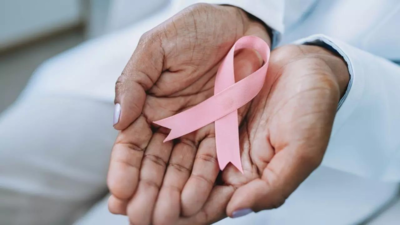NEW DELHI: Had it not been for a series of tests under her annual health policy, Sheetal Thakur (46) could have been left battling for life. The routine check-up turned out to be a life-saving event, revealing she had breast cancer and underlining the importance of early detection. She said as the disease was detected early, it didn’t spread to her other organs, and a combination of surgery and chemotherapy, helped her recover faster.
Unfortunately, cancer specialists say, most cases of breast cancer – the most common cancer among women in India – are detected late because of lack of routine screening. A study published in BMC Public Health recently shows the extent of this crisis.
Examination of the breasts using X-ray, referred to as mammography in medical terms, is an important method to detect the cancer, and doctors advise that all women aged 40 and above should undergo the screening process at least once in two years.
However, according to the study, only one in every 100 women aged 45 years and above in the country undergo mammography, which is lower than the mammography rates in African countries (4.5%). In Europe and the US, the periodic mammography rate is as high as 84%.
The BMC research, led by Divya Khanna and Dipak Das from Tata Memorial Centres in Varanasi and Mumbai and Priyanka Sharma from the ESIC Medical College and Hospital in Faridabad, shows the highest prevalence of mammography in India is in Kerala (4.5%), followed by Karnataka (2.9%), Lakshadweep (2.7%) and Maharashtra (2.05%). In Delhi, the mammography rate is less than 1% among women aged 45 years and above.
The study is based on data collected from 35,083 women in the Longitudinal Ageing Study of India, a nationwide representative survey, to find out how many of them had undergone mammography in the past two years. It revealed that only 1.3% of women had undergone mammography.
Dr. P Raghu Ram, founding director, KIMS-USHALAKSHMI Centre for Breast Diseases, Hyderabad, said the main reasons why women hesitate to undergo a screening mammogram include lack of awareness and the fear of risk from radiation exposure which is a myth since modern day mammography (Digital and 3-D Mammography) involves only a tiny amount of radiation – even less than a standard chest X-ray.




